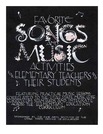
This resource includes the sheet music, activity instructions, and audio files for "Old Joe Clark" from the Elementary Songbook.
- Subject:
- Arts and Humanities
- Music
- Material Type:
- Activity/Lab
- Author:
- Leslie
- Date Added:
- 02/07/2024

This resource includes the sheet music, activity instructions, and audio files for "Old Joe Clark" from the Elementary Songbook.

This resource is a free, downloadable audio file of short music clips to use for instruction.

This resource is a free, downloadable audio file of short music clips to use for instruction.

This resource includes the sheet music, activity instructions, and audio files for "Old MacDonald Had a Farm" from the Elementary Songbook.

This resource is a free, downloadable audio file of short music clips to use for instruction.

Once upon a time, Old Mother Hubbard went to the cupboard to give her dog, Sam, his dinner. But when she went there, the cupboard was bare, and poor little Sam grew thinner. So she went to get some food. But you won't believe the musical surprise that awaited when she returned. Listen now to 'Old Mother Hubbard,' an episode of YourClassical Storytime, featuring a variety of classical music and original illustrations by Nancy Carlson.

What happens when an old man discovers a love for singing after a magical flying boat takes him on a journey of self-discovery? See what musical surprises await in the latest YourClassical Storytime episode, Old Nasuk and the Flying Song, an Inuit folk tale that features traditional Inuit throat singing and enchanting music by Claude Debussy, with John Nasukaluk Clare as the guest storyteller and original art by Xee Reiter!

This resource is a free, downloadable audio file of short music clips to use for instruction.

This resource is a free, downloadable audio file of short music clips to use for instruction.

What happens when a crafty fox tries to trick a friendly stork and a wary rooster? Find out in Outfoxed, the latest episode of YourClassical Storytime, featuring narration by Valerie Kahler, music by Dmitri Kabalevsky and illustrations by Mia Jennings.
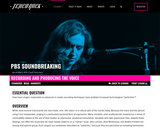
There are many who believe that "less is more" when it comes to using technology. This is the heart of the debate around recording vocals in music: how much manipulation is too much? If recording engineers and producers can use computers and software to digitally alter a vocal track, what happens to the original voice, and what role does talent play? To many, there is a fine line between the "perfection"that can be achieved with technology and the experience of "authenticity" in a recorded vocal performance. This lesson explores the ways in which music technology can enhance a singer's performance. It also considers the listener's interest in hearing the "authenticity" of a vocal performance. Either way, the heart of most popular music is the same, important center: the human voice.
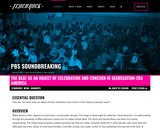
As the lesson unfolds, students will get to investigate some of the ways listeners feel and relate to rhythms, focusing on the language used to describe "the beat," and the manners in which rhythms connect to a deeper past and seem to anticipate particular futures. If "the beat" was a concern in 1950s America, it was again a concern for some, decades later, when Gangsta Rap began to dominate the Billboard charts. How far have we come? And how can we study the past to learn more about the future we're making and the music we'll make it with? This lesson gets to the heart of the conflicts that arise as particular rhythms get made, released, listened to, and loved.
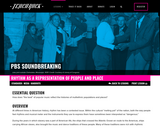
This lesson explores several strands of the musical "DNA" that make up the beat of popular music. Looking to the past, this lesson asks what it means to call music "Afro-Cuban" "Afro-Caribbean," or more broadly, "African-American." Students will use Soundbreakingclips of Santana and Beyonce and the Soundbreaking Rhythmic Layers TechTools to locate in American popular music influences stemming from the African-American church, Latin America and West Africa. Students will then explore the ways "the beat" of this music has, to some listeners, been perceived as "dangerous" while, for others, it is believed that music has been able to challenge obstacles of racism and segregation, bringing people from varied ethnic groups and lifestyles together in ways that words and laws could not.

In this lesson students explore the creative concepts and technological practices on which Hip Hop music was constructed, investigating what it means to "sample" from another style, who has used sampling and how. Then, students experience the technology first hand using the Soundbreaking Sampler TechTool. Students will follow patterns of Caribbean immigration and the musical practices that came to New York City as a result of those patterns, finally considering the ways in which Hip Hop reflects them. Moving forward to the late 1980s and early 90s, what some consider Hip Hop's "Golden Age," this lesson explores how sampling might demonstrate a powerful creative expression of influence or even a social or political statement. Finally, this lesson encourages students to consider the conceptual hurdle Hip Hop asked listeners to make by presenting new music made from old sounds.

In this lesson, students use examples from visual art as well as rap to enter into a "structured academic controversy" that explores the concept of originality.
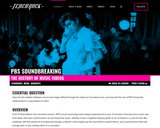
The 24-hour-a-day music video programming of MTV gave musicians and their audiences a platform to fully explore the experience of sound and image. In this lesson, students will investigate the ways musicians used video before MTV, then consider how MTV changed the way artists have exploited the surprising territory where sound meets image.
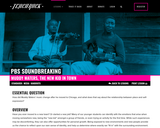
In this lesson, students follow the life journey of Blues musician McKinley "Muddy Waters" Morganfield, from his early beginnings in rural Mississippi to his music career in Chicago, Illinois. In learning about Waters' life, students consider the ways new environments might inspire people to express themselves in different ways. Students then reflect on ways new experiences might have spurred their own personal growth by creating a life roadmap.

This lesson explores the possibilities created by the new technology of cassettes and how people made use of them. In many ways, the digital future and its interactive possibilities were prefigured by the cassette era. By viewing and discussing clips from Soundbreaking Episode Eight, students learn how the Grateful Dead allowed their fans to tape their concerts and freely trade cassettes of their recordings, a move that helped establish the group as innovators in how bands cultivate relationships with their fanbase. Students will also consider how the cassette allowed individuals to express themselves through the selection, sequencing and re-packaging of commercially released music. In the last part of the lesson, they will look at the Sony Walkman and related devices, the first portable cassette players that led toward the current age of iPods, Mp3 players, and other forms of personal digital listening devices, exploring a period in which the boundaries between "consumer" and "producer," and "fan" and "participant" began to erode, allowing even the casual music fan a degree of access to the creative process.
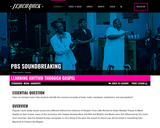
In this lesson, Gospel music is used as a way to introduce students to the rhythmic concepts of beat, meter, backbeat, subdivision, and syncopation. By clapping and counting along to videos of Mahalia Jackson, Sam Cooke, Sister Rosetta Tharpe, The Staple Singers, and Beyonce, students practice hearing and identifying these various aspects of rhythm. Students will also use an interactive TechTool to gain a deeper understanding of the syncopated rhythms that allows Gospel, as well a popular music in general, inspire us to move.
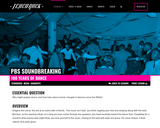
In this lesson, students investigate these questions by analyzing videos of dancing through the decades. With the help of a worksheet, student groups watch footage of the Charleston and Lindy Hop, the Mambo, "Love-in" dancing, Disco, and Break Dancing. Based on their informed observation of these styles, they then debate whether dance has "evolved" in American culture, or remained mostly the same.